Cameras and Sensors for Embedded Vision
WHILE ANALOG CAMERAS ARE STILL USED IN MANY VISION SYSTEMS, THIS SECTION FOCUSES ON DIGITAL IMAGE SENSORS
While analog cameras are still used in many vision systems, this section focuses on digital image sensors—usually either a CCD or CMOS sensor array that operates with visible light. However, this definition shouldn’t constrain the technology analysis, since many vision systems can also sense other types of energy (IR, sonar, etc.).
The camera housing has become the entire chassis for a vision system, leading to the emergence of “smart cameras” with all of the electronics integrated. By most definitions, a smart camera supports computer vision, since the camera is capable of extracting application-specific information. However, as both wired and wireless networks get faster and cheaper, there still may be reasons to transmit pixel data to a central location for storage or extra processing.
A classic example is cloud computing using the camera on a smartphone. The smartphone could be considered a “smart camera” as well, but sending data to a cloud-based computer may reduce the processing performance required on the mobile device, lowering cost, power, weight, etc. For a dedicated smart camera, some vendors have created chips that integrate all of the required features.
Cameras
Until recent times, many people would imagine a camera for computer vision as the outdoor security camera shown in this picture. There are countless vendors supplying these products, and many more supplying indoor cameras for industrial applications. Don’t forget about simple USB cameras for PCs. And don’t overlook the billion or so cameras embedded in the mobile phones of the world. These cameras’ speed and quality have risen dramatically—supporting 10+ mega-pixel sensors with sophisticated image processing hardware.
Consider, too, another important factor for cameras—the rapid adoption of 3D imaging using stereo optics, time-of-flight and structured light technologies. Trendsetting cell phones now even offer this technology, as do latest-generation game consoles. Look again at the picture of the outdoor camera and consider how much change is about to happen to computer vision markets as new camera technologies becomes pervasive.
Sensors
Charge-coupled device (CCD) sensors have some advantages over CMOS image sensors, mainly because the electronic shutter of CCDs traditionally offers better image quality with higher dynamic range and resolution. However, CMOS sensors now account for more 90% of the market, heavily influenced by camera phones and driven by the technology’s lower cost, better integration and speed.
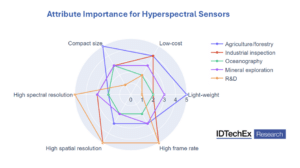
Detailed Imaging and Pixel-level Accuracy with Emerging Image Sensors
A graph showing the importance of hyperspectral imaging qualities by sector. Emerging image sensors are being developed with capabilities beyond well-established CMOS detectors, with the possibility of detecting broader parts of the light spectrum that are beyond human vision. IDTechEx‘s report, “Emerging Image Sensor Technologies 2024-2034: Applications and Markets“, covers new technologies including hyperspectral imaging
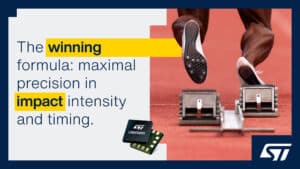
STMicroelectronics Reveals Advanced 2-in-1 MEMS Accelerometer in One IMU for Intensive Impact Sensing in Wearables and Trackers
16g/80g dual-range IMU with edge processing brings advanced sports monitoring to affordable wearables to “train like a pro!” Geneva, Switzerland, February 24, 2025 — STMicroelectronics’ innovative LSM6DSV80X combines two accelerometer structures for 16g and 80g full-scale sensing, a gyroscope up 4000dps, and embedded intelligence in a single component. Capable of measuring events ranging from slight

Top-tier ADAS Systems: Exploring Automotive Radar Technology
Radars have had a place within the automotive sector for over two decades, beginning with the first use for adaptive cruise control and many other developments taking place since. IDTechEx‘s “Automotive Radar Market 2025-2045: Robotaxis & Autonomous Cars” report explores the latest developments in radar technology within the automotive sector. ADAS safety systems ADAS (advanced

Vision Components and Phytec Announce Partnership: MIPI Cameras and Processor Boards Perfectly Integrated
Mainz, February 20, 2025 – Phytec and Vision Components have agreed to collaborate on the integration of cameras into embedded systems. The partnership enables users to easily operate all of VC’s 50+ MIPI cameras with Phytec embedded imaging processor boards. The corresponding drivers are already included in the Linux BSP of the Phytec modules. As
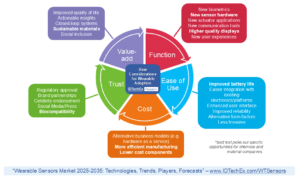
3 Challenges Facing the Wearable Sensors Market
User considerations and potential barriers to adoption of new wearable technology. The wearable sensors market encompasses an array of exciting technologies with the potential to unlock a host of applications in healthcare, extended reality, industrial IoT, and more. Yet as the wearable sensors market matures, there will be some roadblocks for growth ahead. IDTechEx‘s report,

The Critical Role of FPGAs in Modern Embedded Vision Systems (Part 1)
This blog post was originally published at e-con Systems’ website. It is reprinted here with the permission of e-con Systems. FPGAs are rapidly becoming a best-fit solution for meeting the unique demands of high-performing embedded vision systems. Get insights into what FPGAs are, the challenges they solve, and how they offer unmatched benefits for interface

FRAMOS at Embedded World 2025
FRAMOS is about to showcase innovative imaging technology at Embedded World 2025 Munich/Nuremberg, Bavaria, Germany – February 18th, 2025 – FRAMOS, the leading global expert in embedded vision systems, will participate at the Embedded World 2025 in Nuremberg at the exhibition grounds (NürnbergMesse). FRAMOS will present the latest innovations from March 11th to 13th. The

$1 Trillion by 2030: The Semiconductor Devices Industry is On Track
This market research report was originally published at the Yole Group’s website. It is reprinted here with the permission of the Yole Group. Entering a new growth cycle, the surge in the semiconductor industry is driven by the rise of generative AI processors and HBM[1] OUTLINE Market evolution: with a $672 billion market in 2024[2],
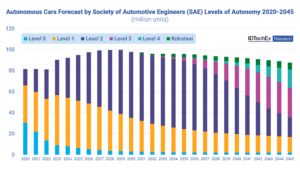
Autonomous Cars are Leveling Up: Exploring Vehicle Autonomy
When the Society of Automotive Engineers released their definitions of varying levels of automation from level 0 to level 5, it became easier to define and distinguish between the many capabilities and advancements of autonomous vehicles. Level 0 describes an older model of vehicle with no automated features, while level 5 describes a future ideal
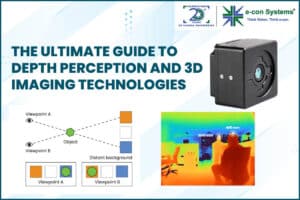
The Ultimate Guide to Depth Perception and 3D Imaging Technologies
This blog post was originally published at e-con Systems’ website. It is reprinted here with the permission of e-con Systems. Depth perception helps mimic natural spatial awareness by determining how far or close objects are, which makes it invaluable for 3D imaging systems. Get expert insights on how depth perception works, the cues involved, as

